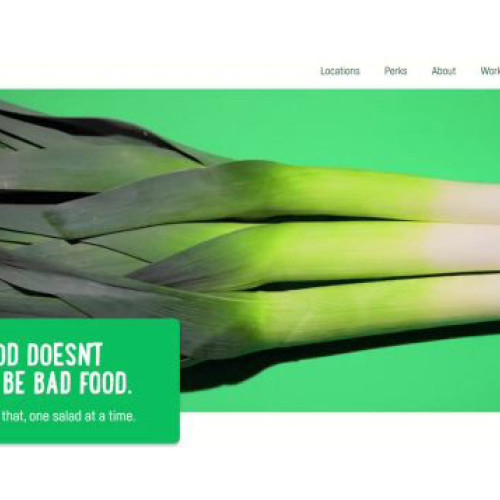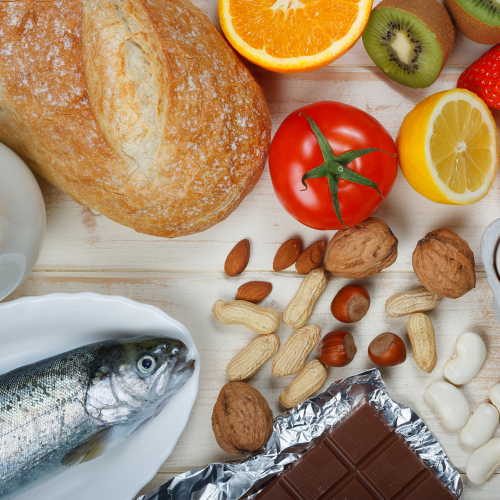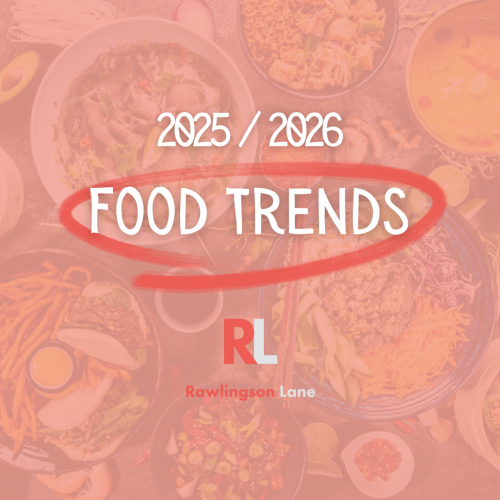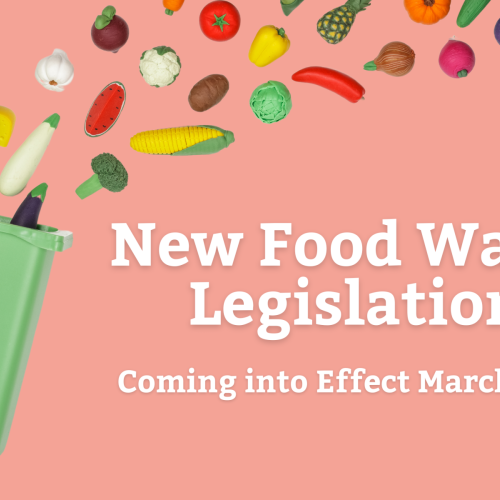A Review of the 2025/26 Food Trends
Earlier this year, we shared The Food People’s forecasted food trends for 2025. Now we are halfway through the year (we know, we can’t believe it either!), it’s time to see how these predictions are shaping up. Preferences are constantly evolving. From inventive ideas with food pairings to exploring exotic flavours or jumping on the latest health craze, customers are always demanding more. However, as always, it’s all about balance, as alongside this, there is a continuing return to comfort food and simplicity.
As the year has progressed, we’ve seen some trends really taking hold and changing the way the industry does business. Speed and convenience, especially within the QSR sector, is driving a shift to increased self-service kiosks and digitised ordering. To further simplify this for the customer, many forecourts now include several drive-thru stations, enabling customers to visit their favourite brands, without even leaving their car; although, in an industry juxtaposition, the growth in luxury experience and high end dinning opportunities, shows how indulgence and extravagance adds value to businesses and elevates expectations. Successful dining out is a pre-planned event, not necessarily just an easy option when we don’t want to cook.
1.Joy of Missing Out (JOMO)
This is still very much a hot topic with more growth within the takeaway sector than dining in. Self service kiosks additionally fuel the lack of interaction; however, with immersive and experiential dining taking hold, we may start to see equilibrium being restored, especially as the industry looks to change what dining out really means. We’re either getting our food on the run or going all out with a full-on experience or competitive socialising and the middle ground is feeling the squeeze.
The morning daypart has actually seen growth when it comes to eating out, so it appears, whilst JOMO is a successful antithesis to FOMO, it is yet to dominate. Although the frequency of eating out is decreasing, the association of this as an occasion means that many still relish this opportunity.*
*Kantar’s Worldpanel, OOH Usage Data: 52 w/e 3 Nov 24 vs 5 Nov 23

2. Omnivore
The debate on plant-based vs carnivore diets is never-ending. Interestingly, despite the recent increase in people choosing vegan, vegetarian or flexitarian diets, this is starting to stagnate.* This shift may be explained by plant-based diets originally being seen as healthier, but this is now being questioned due to growing awareness around the impact of ultra processed foods and the increasing push on high-protein meals. With health a key driving force behind dietary preferences, the foodservice industry is keeping both options inclusive to capitalise on the preference for omnivore diets. This means ensuring plant-based offerings use clean and natural ingredients to create dishes that are high in protein, whilst for meat eaters, menus should prioritise reducing saturated fat and cholesterol where possible.
*Kantar Usage, Total main meal occasions, 52 w/e 23 February 2025 versus previous four years

3. Big Fusion
This food trend has well and truly taken off as extravagant ideas drawing from different cultures take hold. Most prominent on social media, curious culinary combinations pique interest and get people taking. With these trends on the rise, we obviously had to try this out for ourselves! See what happened when we tested the latest curations in alcoholic drinks (Dirty Aperol Spritz and Jalapeno Sauvignon Blanc) and a very unique ice cream topping...
4. Crave Worthy
Another trend driven by social media is the demand for elaborate and aesthetically appealing food. Whether oozing cheese, overstuffed cookies or burgers piled with toppings, these tempt customers with their decadent appeal.
Let’s talk about Dubai Chocolate for a moment. It has taken the internet by storm with a plethora of brands developing their own line of pistachio based delights (and we felt compelled to ‘take one for the team’ and try this trend. Check out our little taste test!). However, we must be sceptical of how long this viral obsession will last, especially with the recent warnings over imported products potentially containing unmarked allergens and illegal additives. Whilst adding pistachio items to a menu will certainly boost sales short-term, the long term win is to be constantly looking for the next big thing to set yourself apart from competitors.

5. Slim & Trim
On the flipside of crave-worthy treats is the ongoing consciousness around health. The biggest change here is that calorie counting appears to be replaced with alternative ways of monitoring health and wellness. Prominent in this discussion is WeightWatchers filing for bankruptcy in May 2025. Several factors contributed to its fall, including the prominence of weight loss drugs, such as Ozempic. Endorsed by celebrities such as Elon Musk, Rebel Wilson and Remi Bader, Ozempic is a brand of medication which contains semaglutide, a synthetic hormone to help regulate blood sugar levels and appetite.
At the same time, there has been an increase in the popularity of supplements. From mushroom based wellness to magnesium and collagen, three in four consumers are now regularly taking some kind of nutritional supplement.* To maximise this changing definition of wellness, the foodservice industry is considering how they can weave popular items, such as protein powder, lion’s mane and sea moss, into menus. The growing number of juice bars could particularly capitalise on this.
As part of the UK Government’s recent obesity plan, HFSS legislation will mean that supermarkets will be legally required to eliminate promotion of high fat, sugar and salt food and drink products. This will have huge influences in retail, from discounting heathier items to updating the ingredients in own-brand products and will likely overspill into foodservice as consumer preferences adjust accordingly.
* Innova’s Consumer Insider & Health Wellness Drivers UK 2024 report

6. Pure & Clean
Ultra processed foods remain a growing concern for customers, who are looking for products made with fewer and more wholesome ingredients. This is particularly prominent within the bread market. Whilst before the focus was on wholemeal and granary bread as a healthier way to enjoy your morning toast and sandwiches, sourdough is now a frontrunner within this area. Promoting their clean ingredients, brands such as Jason’s Sourdough and Crosta & Mollica are now commonplace on supermarket shelves as customers choose products with shorter and more recognisable ingredient lists. This shift towards a more health-conscious consumer emerges from new research into how exactly ultra processed products impact our bodies, which has been spread through influencers, such as Sunna van Kumpen (@tonichealth). Van Kumpen’s Instagram profile is currently gaining 1.3 million followers each month, and his company Tonic Health has recently received a £2.8 million investment to launch three new products and expand its influence within retail.
Restaurants are similarly on board with this trend with many now using local and seasonal ingredients. From London venues like Bleecker Burgers and TOWN, to one of our favourite local cafés, Bunces in Marlborough, restaurants across the country are prioritising local and clean produce.

7. Prevent That Waste
Since new legislation came into force at the end of March, businesses with ten or more employees must now separate their waste into mixed recycling, general waste, food waste and paper. As a result, food packaging is continuing to be reduced or altered into recyclable variants. It is still early days to see the long-term impact of this legislation on the environment, but the growing awareness it has caused around both recycling and food waste means that further steps towards a more sustainable future is likely.
Already embracing the eco-conscious dining experience is Silo, the world’s first zero waste restaurant. Using natural farming and closed loop cooking, Silo proudly claims it is ‘a restaurant without a bin’, and of the minimal waste that is produced, this is all natural and compostable. Owner, Douglas McMaster has additionally written a book on minimising food waste and most recently opened a zero-waste cooking school to share the message further.

8. Sweet Treats
Despite the focus on healthy eating, the out of home opportunity for sweet treats has never been stronger and while dessert cafés are still popular, bakeries are also riding the wave. Customers looking for a decadent snack are expecting premium quality, and the explosion of craft bakeries doesn’t disappoint.
Arome, Toad, Buns from Home, Half Dozen Other; there are hundreds of bakeries who carefully craft impressive baked goods using quality ingredients to make mouthwatering and impressive breads, cakes, buns etc. Meanwhile, Bread Ahead goes a step further when delivering experience alongside indulgence as they provide workshops both online and in-person.

9. Snack Attack
Snacking is on the rise and, what’s more, it is no longer assigned to elevenses or the 3pm afternoon slump. Many customers are actually now seeing snacks as a way of replacing meals, especially as these can be consumed quickly and on the go. With snacks substituting or supplementing breakfast, lunch and dinner, we have found increased emphasis on snacks made with natural and nutrient dense ingredients. This suggests that it is no longer solely about satisfying cravings but getting in valuable nutrients as well. A menu of healthier nibbles in cafés, restaurants and pubs can therefore be an ideal way of driving sales.

10. New Protein
Ocado Retail reported that searches for high-protein foods have more than doubled in the past year, however, the popularity of high protein snacks and meat alternatives have not taken off as much as anticipated as these can be associated with concerns around ultra processed food. Instead, many have returned the focus to good quality meat, fish, eggs and dairy as natural sources of protein. Cottage cheese has seen an upturn in sales, as have foods such as kefir and natural yoghurt which hit the protein button as well as being ‘clean’.
To capitalise on these trends and our industry insight, find out more on our website or email kevin@rawlingsonlane.co.uk for a chat.

About The Author
PR & Copywriting Intern View more from Caitlyn











